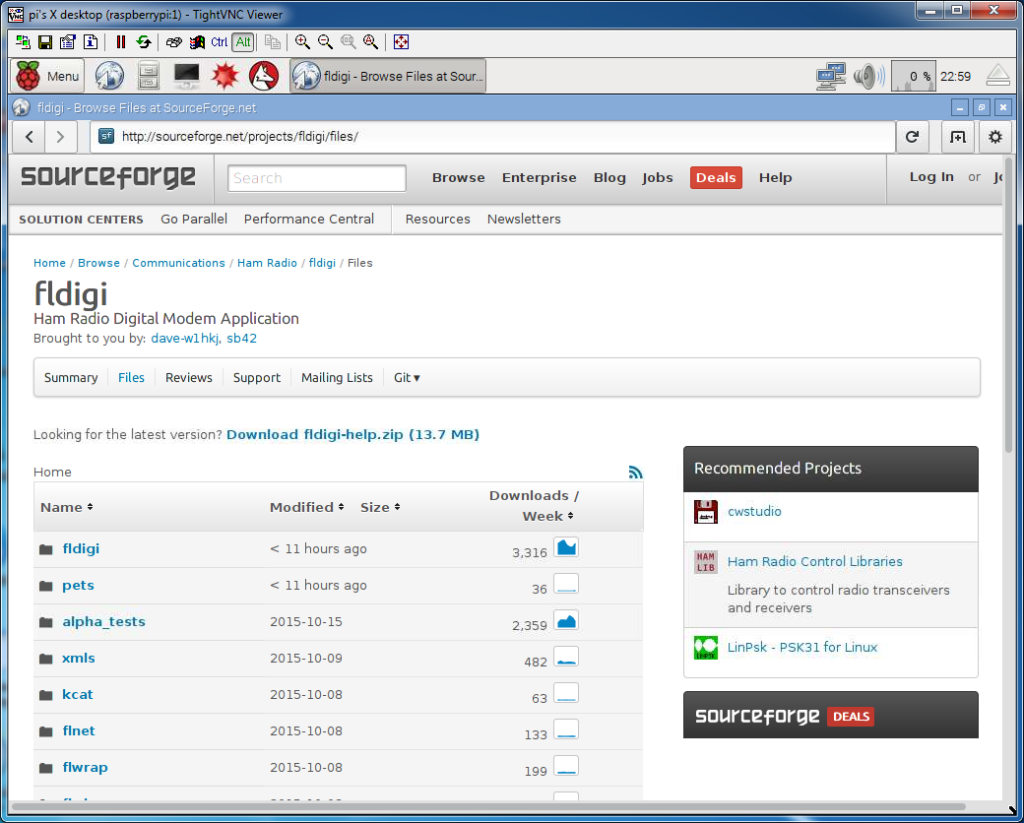

Multiple sound systems are supported by Fldigi, allowing the program to abstract the sound card hardware across differing hardware and operating systems.
Fldigi on raspberry pi portable#
The Fldigi software is written in highly portable C/ C++ and can be used on many CPU architectures, including:

Because of this, the software can run on many different operating systems such as:Īdditionally, Fldigi is designed to compile and run on any POSIX compliant operating system that uses an X11 compatible window system / graphical user interface. Portability Operating systems įldigi is based on the lightweight portable graphics library FLTK and the C/ C++ language. Transfer of files, emails, and FEMA ICS forms are possible using inexpensive radio hardware. Using this software, it is possible for amateur radio operators to communicate worldwide while using only a few watts of RF power.įldigi software is also used for amateur radio emergency communications when other communication systems fail due to natural disaster or power outage. Increasingly, the software is also being used for data on VHF and UHF frequencies using faster modes such as 8-PSK.

Such communications are normally done on the shortwave amateur radio bands in modes such as PSK31, MFSK, RTTY, Olivia, and CW (Morse code). This interconnection creates a "sound card defined radio" whose available bandwidth is limited by the sound card's sample rate and the external radio's bandwidth. The software is mostly used by amateur radio operators who connect the microphone and headphone connections of an amateur radio SSB or FM transceiver to the computer's headphone and microphone connections, respectively.
Fldigi on raspberry pi free#
Might do that later if I have the time! In the meantime, any help would be much appreciated.English, Italian, Spanish, French, German, Polish, Dutchįldigi (short for Fast light digital) is a free and open-source program which allows an ordinary computer's sound card to be used as a simple two-way data modem. Why is fldigi software not picking up what peaks I do have? What is the bigger peak in the middle these? Why can I not see 2 peaks close together and why is one of them very small. It is set to USB mode (I have a funcube dongle pro+) and all other settings are as described in the Pits manual. The dl-fldigi software is running but no significant signal appears in the waterfall. There is also a very large peak at 434 288 MHz that is independent of my Pits board. I have confirmed these signals by turning the Pits board off and on again. Instead I have a relatively large peak at 435 251 MHZ and another very small one at approximately 434 325 MHz. I have managed to receive an audio signal from my PiTS board on the SDR package but I am having trouble isolating the 'double peak' mentioned in the Pits manual. I am at the stage of trying to pipe my audio signal from the SDR software to the dl-fldigi software for decoding:


 0 kommentar(er)
0 kommentar(er)
